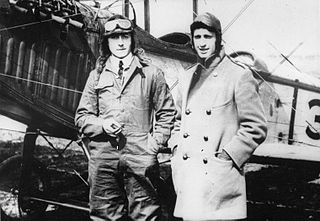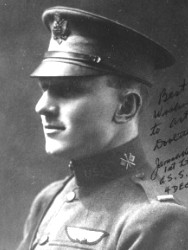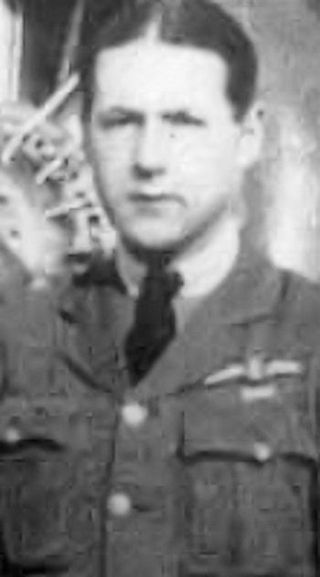Related Research Articles
Robert Kenneth Whitney DFC was a Canadian First World War flying ace, officially credited with 5 victories.

Captain Ernest Charles Hoy DFC was a Canadian First World War flying ace, officially credited with 13 victories. He later pioneered airmail flight over the Canadian Rockies.

Lieutenant Lawrence Kingsley Callahan was a World War I flying ace credited with five victories.
Lieutenant George William Gladstone Gauld was a World War I flying ace credited with five aerial victories.
Captain Robert Norwood Hall was a South African World War I flying ace credited with five aerial victories.
Lieutenant Ernest Lindup was a South African World War I flying ace credited with five aerial victories.
Lieutenant Harold Arthur Sydney Molyneux was a World War I flying ace credited with five aerial victories. During World War II, he returned to service in the Royal Canadian Air Force.

Lieutenant Orville Alfred Ralston was a World War I flying ace credited with five aerial victories. He returned to service for World War II, only to die in a B-17 crash.
Major Oliver Stewart MC AFC (1896-1976) was a World War I flying ace credited with five aerial victories. Post war, he had a long and distinguished career as a writer.

Lieutenant Hilbert Leigh Bair began his service career as a World War I flying ace credited with six aerial victories.
Captain Henry Gordon Clappison was a World War I flying ace credited with six aerial victories.

Lieutenant James Alfred Keating was an American World War I flying ace credited with six aerial victories, including four triumphs during a running battle on 9 August 1918.
Lieutenant George Edgar Bruce Lawson was a South African World War I flying ace credited with six aerial victories.

Lieutenant Cleo Francis Pineau was an American World War I flying ace credited with six aerial victories. He was a renowned motorcycle racer both before and after the war. He later became an executive in the steel industry.
Captain Ronald Sykes (1899-1977) was a World War I flying ace credited with six aerial victories.
Lieutenant Cecil Robert Thompson was a South African World War I flying ace credited with six aerial victories.
Lieutenant Earl Frederick Crabb was a World War I flying ace credited with six aerial victories. After World War I, he was an aviation pioneer and bush pilot. He returned to military aviation during World War II. He flew as a commercial pilot until he was 72 years old.

Lieutenant Kenneth Russell Unger was an American World War I flying ace credited with fourteen aerial victories. His candidacy rejected by his own nation, Unger applied to the British Royal Flying Corps for military pilot training in June 1917. Once trained, he was assigned to the Royal Naval Air Service (RNAS). As the RNAS was merged into the Royal Air Force, Unger scored his aerial victories between 26 June and 1 November 1918. In later life, Unger remained involved in aviation and served again during World War II. He also joined the U.S. Navy Reserves, rising to the rank of rear admiral.

Lieutenant Chester Ellis Wright was an American World War I flying ace credited with nine confirmed aerial victories. He was the top scoring ace for his squadron.

Lieutenant Frederick Ernest Luff was an American flying ace during World War I. He was credited with five aerial victories, and awarded the British Distinguished Flying Cross.
References
Above the Trenches: a Complete Record of the Fighter Aces and Units of the British Empire Air Forces 1915–1920. Christopher F. Shores, Norman L. R. Franks, Russell Guest. Grub Street, 1990. ISBN 0-948817-19-4, ISBN 978-0-948817-19-9.